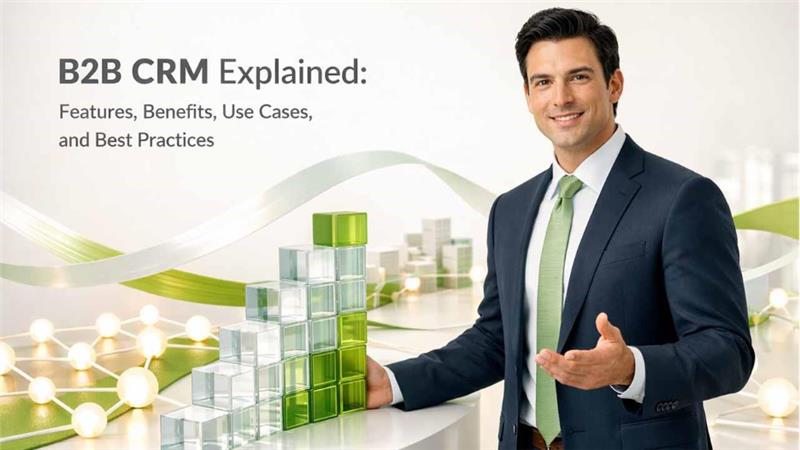Businesses focus on year-end financial planning as the fiscal year comes to a finish. Since it's an essential phase that guarantees stability and lays the foundation for future expansion. Making strategic financial adjustments based on customer behavior, sales trends, and operational efficiency can be made easier with the use of Customer Relationship Management (CRM) data. Effective use of CRM data can revolutionize your financial planning by giving you a clear picture of how to increase profitability in the upcoming year and where to deploy resources.
We expect that you already are well aware of the concept of “What is CRM” and also have a basic knowledge of its benefits. Therefore, in this article, we’ll explore seven actionable ways to use CRM data to optimize your year-end financial planning.
1. Analyze Sales Trends
CRM data offers a wealth of information on sales trends that can guide your financial planning. You can determine product preferences, long-term buying patterns, and seasonal spikes by looking at sales patterns throughout the year.
Businesses can more precisely predict future sales according to this data. It facilitates preparing for expected changes in revenue. For instance, if certain products or services performed exceptionally well during specific times, you can plan inventory, adjust pricing, or increase marketing efforts to maximize returns.
2. Evaluate Customer Profitability
CRM systems store detailed records of customer transactions, allowing businesses to assess the profitability of individual clients. You can use metrics like lifetime customer value and buy frequency to determine which of your customers are the most valuable and profitable.
Identifying these clients makes it simpler to give them priority in subsequent planning initiatives by customizing services or providing special advantages. Customer loyalty is created by this focus, and revenue stability and growth depend on it.
3. Monitor Outstanding Invoices
Tracking outstanding invoices through your CRM system is crucial for maintaining cash flow and reducing financial risk. By identifying customers with unpaid balances, you can follow up on overdue payments and implement effective collection strategies before year-end. For businesses looking to further reduce financial risk, services like Allianz Trade offer tools and insurance that protect against unpaid invoices and enhance cash-flow stability.ing.
Having a clear picture of outstanding invoices allows you to take timely action, such as offering incentives for early payment or establishing payment plans.
Effective invoice management through CRM data also allows you to project more accurate cash flow statements. You can manage your end-of-year tax obligations, budget for future initiatives, and plan spending by being aware of the status of outstanding payments.
Leveraging CRM data in this way ensures your business can meet financial obligations, invest in new initiatives, and end the year with a healthier balance sheet.
4. Assess Marketing Campaign Effectiveness
CRM data can be invaluable for assessing the effectiveness of marketing campaigns, especially when planning for the next fiscal year. You can identify areas for improvement and ascertain which initiatives were most successful by examining consumer engagement and conversion rates.
You can better grasp the effects of each marketing campaign by looking at measures like return on investment, customer acquisition cost, and overall campaign reach. Your marketing budget can be improved by concentrating on high-performing tactics and reducing less successful ones because of to this insight.
5. Identify Upselling and Cross-Selling Opportunities
CRM data enables businesses to recognize upselling and cross-selling opportunities by analyzing customer purchase history and preferences. Finding the items or services that are commonly bought together or by particular consumer segments will help you create customized suggestions that boost sales and strengthen connections with customers.
A CRM system that tracks customer behavior offers valuable insights into how to do quotes, allowing sales teams to create accurate and attractive quotes that reflect a client’s unique needs and preferences. Incorporating upselling and cross-selling opportunities into your year-end financial strategy can significantly enhance profitability.
Personalized product recommendations show that you understand your consumers' wants better and boost the chance of repeat business. This approach strengthens customer loyalty and boosts lifetime value, contributing to a stronger financial outlook for the upcoming year.
Conclusion
You can make well-informed, data-driven decisions that maximize profitability and optimize resources by using CRM data for year-end financial planning. From evaluating marketing success to forecasting future revenue, CRM insights provide a clear direction for resource allocation and growth strategies. Regularly updating and maintaining your CRM system ensures that the data you rely on is accurate and actionable, making each year-end review more effective than the last. By incorporating these CRM-based strategies, you position your business for a successful financial future, ready to navigate new opportunities and challenges with confidence.



